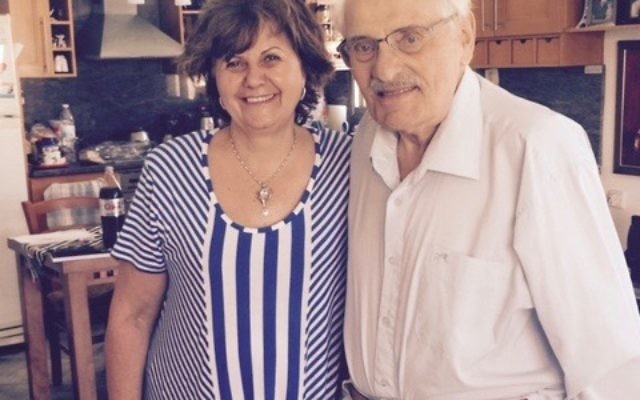Community mourns last Treblinka survivor
THE fate of Samuel Willenberg, Israeli sculptor and last remaining survivor of the Treblinka death camp in Poland, who died last week aged 93, was intertwined with that of well-known Australian Shoah survivor, the late Chaim Sztajer.
THE fate of Samuel Willenberg, Israeli sculptor and last remaining survivor of the Treblinka death camp in Poland, who died last week aged 93, was intertwined with that of well-known Australian Shoah survivor, the late Chaim Sztajer.
Around 870,000 people lost their lives at Treblinka. Willenberg, 93, was involved in the Treblinka revolt in which some 200 prisoners escaped. Only 67 managed to survive the uprising and escape, including Willenberg and Sztajer, although the two apparently did not know each other.
Both men were born in the Polish city of Czestochowa, from where many Jews were transported to Treblinka. And both used their skills at craft to perpetuate the memory of one of history’s darkest times.
Like Willenberg, Sztajer – who built an intricate scale model of the Treblinka camp which is on display at the Jewish Holocaust Museum and Research Centre (JHC) in Melbourne – was among the few arrivals at the camp to be selected for work rather than extermination.
Sztajer passed away in 2008, aged 98. His daughter, Malka Silver of Melbourne, met Willenberg in Tel Aviv in October last year through a mutual friend, and they discussed plans for a learning centre to be built near the site of the former Treblinka camp.
Silver, a volunteer tour guide at the Jewish Holocaust Museum, told The AJN she and Willenberg’s widow Ada will continue with plans to raise funds for the centre, to be built on land granted by the Polish government.
JHC curator Jayne Josem told The AJN this week of another connection between Willenberg and Sztajer, relating to the Czestochowa Synagogue which was destroyed by the Nazis during the war. Sztajer made a large model of the synagogue, which the JHC will soon acquire, restore and display. The synagogue itself had been restored in the 1930s, with detailed frescos on its ceiling and walls.
“The talented artist responsible for the restoration was Perec Willenberg, father of Samuel,” explained Josem, adding that Perec survived the war on false Christian papers, pretending to be mute and painting church interiors.
“The JHC was deeply saddened to learn of the death of Samuel Willenberg,” said Josem. “His story of survival and heroism was inspiring, as was the work he did after the Holocaust, creating sculptures related to his experiences and educating the public about the Holocaust.”
Sydney Jewish Museum CEO Norman Seligman said: “We were very sad to hear the news about Samuel’s passing, and were reminded once again of the passage of time and how the Holocaust will soon shift from living history to a period evoked through tape and television interviews.
“We pay tribute to the survivors and encourage everyone to visit a museum near them and hear the live testimony of a Holocaust survivor while they still can,” he said.
PETER KOHN


comments